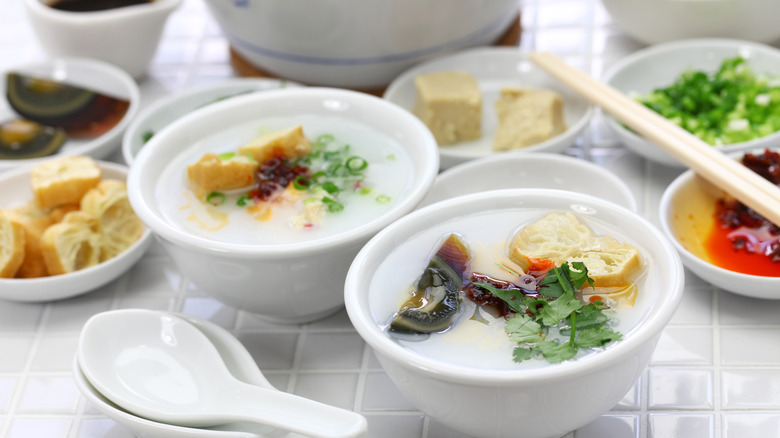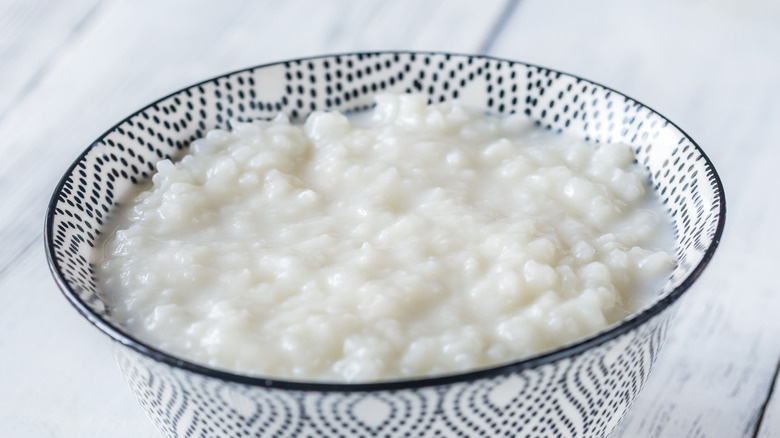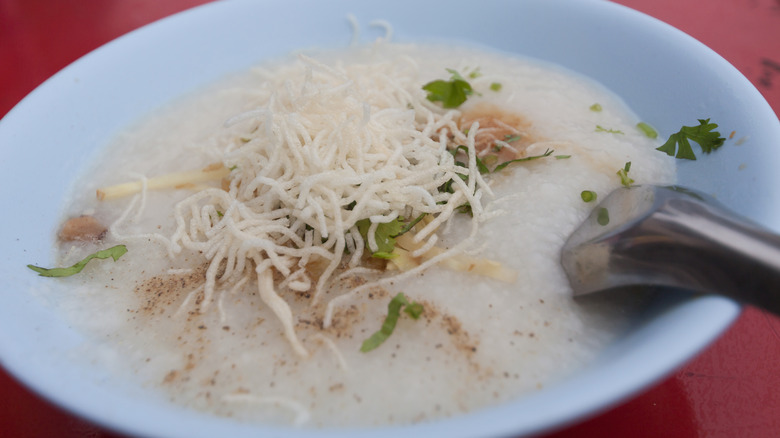Congee Vs Jook: What's The Difference?
It might be a dish that is enjoyed all across Asia, but that wouldn't be immediately obvious to someone who is new to the region, because this popular rice dish has different names, as well as different iterations to go with it. To Indonesians it is bubur, and for the Japanese it is okayu. To Koreans it is juk, while Filipinos call it lugaw (via Food52). So where is it called congee and is there a difference between congee and jook?
While the terms are often used interchangeably to refer to rice porridge, all jook is congee, but not all congee is jook — and it all comes down to the grain-to-liquid ratio, the kind of rice you might want to cook with, as well as the add-ins that can transform the clean slate that is your soupy rice into a memorable meal. Here's what you should know about the differences between these two dishes.
What is congee?
Congee has been around for a while — for about three thousand years, in fact — originating from China's Zhou Dynasty, even though the name "congee" itself is Tamil in origin. What started as "kanji" morphed into "canje" thanks to 16th-century Portuguese explorers before it settled into the more English "congee" (via SBS).
While most congee today is made with rice, it can be made with other grains, too, such as wheat, barley, sorghum, millet, and tapioca.
How thick — or thin — you want your congee to be depends entirely on what your preference is. Some might prefer more rice and less liquid, which makes for a less soupy, more stodgy bowl of porridge. But others may prefer a rice to water ratio of 1 to 9, or 1 to 10. No matter how much liquid you use to make your congee, it's important to remember that the rice will continue to absorb liquid even after you think it's done cooking, so you could well end up with a starchier liquid than you might have intended. Once the porridge is cooked through, you will want to top that with a pickled vegetable or protein of your choice — be it pork flakes, fish, egg, or chicken and season to taste.
What is jook?
While congee is present in many Asian food cultures, jook is present in just one. The savory rice porridge is tied to the southern Chinese province of Guangdong, where it is mainly served for breakfast, but can be enjoyed any time of the day. Mark Bittman, a food writer for The New York Times, recalled his first encounter with jook as one that took place at dawn in a small Hong Kong eatery. He described it as: "transcendent stuff. You might think of it as Chinese risotto, though infinitely less pretentious. It is delightfully creamy, forgiving in its preparation and variable beyond belief."
Bittman points out that most restaurants need to cook their jook overnight in huge vats before they are jazzed up the next day, and that jook doesn't have to be made wholly with water, but with chicken (or vegetable) stock added to the mix in a liquid to grain proportion that is one part rice to eight to 10 parts of liquid. Add-ins like chicken, meat, or seafood can be infused into the jook for up to 15 minutes before the soupy rice is done. Jook is best served hot with garnish, which can include roasted peanuts or deep-fried shallots.


